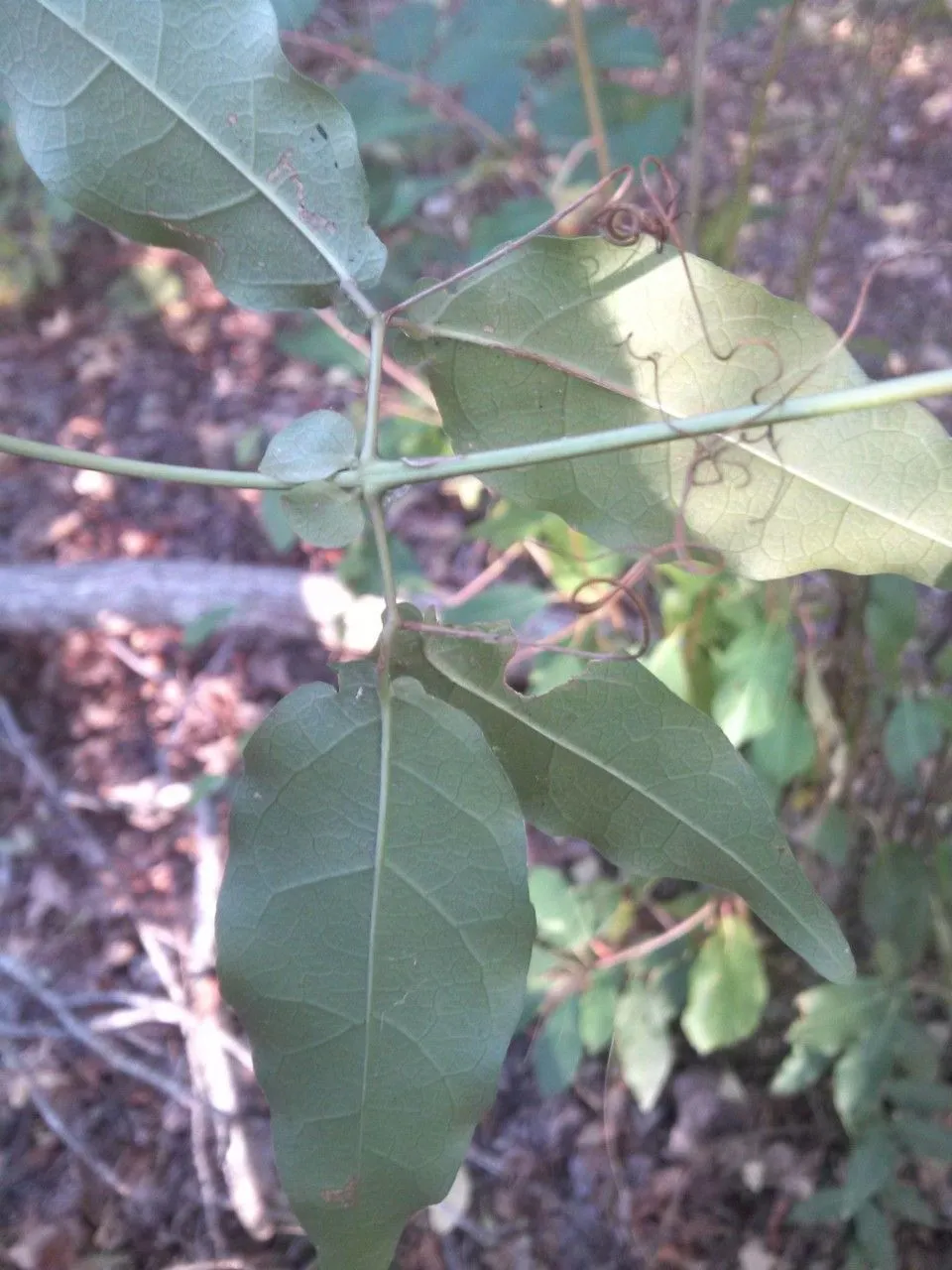
Author: L.
Bibliography: Sp. Pl.: 624 (1753)
Year: 1753
Status: accepted
Rank: species
Genus: Bignonia
Vegetable: False
Observations: C. & E. U.S.A.
Crossvine, scientifically known as Bignonia capreolata, is a fascinating plant species belonging to the Bignoniaceae family. This perennial vine is a native of the central and eastern United States, where it thrives in a variety of habitats ranging from forests to woodlands, as well as along riverbanks and fence lines.
Renowned for its vigorous climbing ability, Crossvine uses its tendrils to ascend structures, often reaching impressive heights. The plant’s most striking feature is its trumpet-shaped flowers, which bloom prolifically in the spring. These flowers typically exhibit vibrant hues of red, orange, and yellow, creating a visually stunning display that not only attracts human admiration but also entices pollinators like hummingbirds and bees.
Beyond its ornamental appeal, Crossvine possesses significant ecological value. It provides shelter and food for various wildlife species, contributing to the biodiversity of its native habitats. Gardeners and landscapers often favor Crossvine for its rapid growth and hardiness, as well as its ability to cover structures such as trellises, arbors, and walls with a lush, green canopy.
The species is relatively low-maintenance, with a high resistance to pests and diseases. It prefers well-drained soil and can tolerate a range of light conditions from full sun to partial shade. While it is not overly demanding in terms of care, occasional pruning may be necessary to manage its vigorous growth and to maintain the desired shape and size.
Bignonia capreolata was first described by the renowned botanist Carl Linnaeus in 1753 in his seminal work “Species Plantarum”. Since then, it has continued to captivate botanists and horticulturists alike with its beauty and utility. Its robust nature and stunning floral display make it a beloved addition to both wild landscapes and cultivated gardens.
In conclusion, Crossvine is more than just an attractive garden choice. Its ability to blend ornamental beauty with ecological benefits makes it a plant of considerable interest and value in both natural and designed landscapes.
Eng: crossvine, quartervine
En: Crossvine, Quartervine, Cross-Vine, Cross vine
Taken Apr 29, 2020 by Daniel champaloux (cc-by-sa)
Taken Jun 9, 2019 by h dametto (cc-by-sa)
Taken Apr 14, 2019 by Stéphanie BODIN (cc-by-sa)
Taken Apr 14, 2019 by Stéphanie BODIN (cc-by-sa)
Taken Apr 30, 2021 by REBEL 08 (cc-by-sa)
Taken May 28, 2020 by Amy Leonard (cc-by-sa)
Taken Apr 6, 2013 by EOL − Suzanne Cadwell (cc-by-nc)
Taken May 16, 2021 by Nicole Vilela (cc-by-sa)
Taken Aug 30, 2021 by Ero Ero (cc-by-sa)
Taken Nov 23, 2020 by pinkbelle gemini (cc-by-sa)
Taken Nov 23, 2014 by EOL − briantrotter (cc-by-nc)
Taken Feb 19, 2013 by EOL − Greg Lasley (cc-by-nc)
Taken Nov 29, 2003 by EOL − Steven J. Baskauf (cc-by-nc-sa)
Taken Apr 29, 2004 by EOL − Bruce K. Kirchoff (cc-by-nc-sa)
Taken Apr 22, 2019 by Marie Jouffrais (cc-by-sa)
Taken Sep 22, 2014 by EOL − Laura Clark (cc-by-nc)
Taken Oct 22, 2014 by EOL − Ann Walter-Fromson (cc-by-nc)
Taken May 19, 2003 by EOL − Steven J. Baskauf (cc-by-nc-sa)
Taken Nov 29, 2003 by EOL − Steven J. Baskauf (cc-by-nc-sa)
Taken May 7, 2002 by EOL − Steven J. Baskauf (cc-by-nc-sa)
Taken May 2, 2022 by Cedric Lacrambe (cc-by-sa)
Taken Jun 2, 2021 by whoa nice plant (cc-by-sa)
Taken May 16, 2021 by Nicole Vilela (cc-by-sa)
Taken Jan 1, 1900 by EOL − Ripley, J.D. (cc-by-nc-sa)
Taken May 16, 2003 by EOL − Steven J. Baskauf (cc-by-nc-sa)
Growth habit: Vine
Family: Myrtaceae Author: (F.Muell.) K.D.Hill & L.A.S.Johnson Bibliography: Telopea 6: 402 (1995) Year: 1995 Status:…
Family: Rubiaceae Author: Pierre ex A.Froehner Bibliography: Notizbl. Bot. Gart. Berlin-Dahlem 1: 237 (1897) Year:…
Family: Sapindaceae Author: Koidz. Bibliography: J. Coll. Sci. Imp. Univ. Tokyo 32(1): 38 (1911) Year:…
Family: Asteraceae Author: A.Gray Bibliography: Pacif. Railr. Rep.: 107 (1857) Year: 1857 Status: accepted Rank:…
Family: Fabaceae Author: Medik. Bibliography: Vorles. Churpfälz. Phys.-Ökon. Ges. 2: 398 (1787) Year: 1787 Status:…
Family: Aspleniaceae Author: (Cav.) Alston Bibliography: Bull. Misc. Inform. Kew 1932: 309 (1932) Year: 1932…